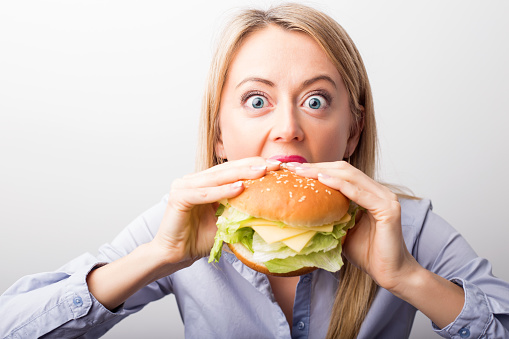
Gut healing plan for better health: A Gut-Healing Plan for Improved Health and Weight Loss
“Our body is not a temple; it is a garden,” says Dawn Harris Sherling, M.D., author of Gut healing plan for better health
She warns that packaged foods loaded with chemical additives like emulsifiers—often with scientific names like polysorbate—are making “bad” bacteria in our gut grow like weeds, leading to inflammation, GI symptoms and weight gain in women over 50. The good news: As soon as you begin to reach for more whole foods and cut back on processed foods, you’ll start to see and feel the difference. Dr. Sherling promises, “If you’re struggling with GI problems, your blood sugar or your weight, I’m here to say you can eat everything—as long as most of it is real food, unadulterated by gut-roiling additives.”
The feel-great results are impressive: Just ask Hanan Mitry, 51, of Virginia Beach. She relieved major pain and digestive trouble in one day by following Dr. Sherling’s advice to cut out emulsifiers and additives. And Rossi Goin, 67, traded her size 16 pants for skinny size 6’s after cutting out processed foods and becoming more mindful with her eating.
And if you make these healthy tweaks now, you’ll experience speedy gut healing and slimming, so you can confidently enjoy more foods in the future without fear of pain or weight gain. You can even slim while enjoying made-from-scratch pancakes, chocolate cookies and real bread.
To experience the results yourself, simply follow Dr. Sherling’s easy guthealing plan for the next four weeks.
Week 1: Start by eating more whole foods and avoiding three of the worst emulsifier additives: carrageenan, polysorbate 60 or 80 and cellulose gum (also called carboxymethylcellulose). Become a diet detective and check the labels for unfamiliar terms, especially when buying seemingly healthy (often expensive) packaged foods. When given the option, reach for homemade baked goods over store-bought options that contain fillers meant to lengthen their shelf life. And when no perfect option is in sight, Dr. Sherling’s motto is, “Choose the ‘least bad’ option.”
Weeks 2 to 4: Continue removing more unnatural additives from your diet, like the artificial sugar maltodextrin and food dyes such as red 40. Although our bodies have a tolerance for some level of synthetic substances in our diet, David Brownstein, M.D., author of Heal Your Leaky Gut, says, “We have to expend energy to rid each nonfood item. And if they add up, they wreak havoc on our health and ability to lose weight.” Remember:
The goal isn’t perfection. You simply want to reduce your toxic load.
Throughout the month, fold in these bonus tips to turbocharge gut healing and weight-loss even more…
Embrace ‘ugly’ foods. “When eating healthier, it’s okay for things to look like they are in their natural state,” assures Dr. Sherling. That means opting for clumpy yogurt, need-to-shake almond milk, even misshapen fruits and vegetables. “It would be good for our health to give up some of the aesthetics and get used to uglier looking food.”
Table of Contents
Use this code at restaurants.
“I’ve found that some chain restaurants note which items on their menus are Paleo- or Whole30friendly,” says Dr. Sherling. “These terms tend to be shorthand for avoiding foods with additives.”
Whip up homemade sauces.
Rather than buying processed bottled marinades or sauces, Dr. Sherling advises making them from scratch. Her advice? “The key is to pair an acid with a fat and throw in some spices.” Her favorites, which are easy to toss together: lemon juice, olive oil, plus salt, pepper and garlic or lime, sesame oil and soy sauce.
Look closely at ‘white’ treats.
A chemical additive called titanium dioxide is used to make foods like marshmallows and frosting appear ultra-white. But studies suggest its particles can accumulate in the body to alter DNA and may even cause cancer. Dr. Sherling says, “If a treat you are about to eat has something blindingly white on it, pay particular attention to the label.”
Be smart with sweeteners.
Unless you’re diabetic, Dr. Sherling suggests using real sugar or honey rather than artificial sweeteners that



